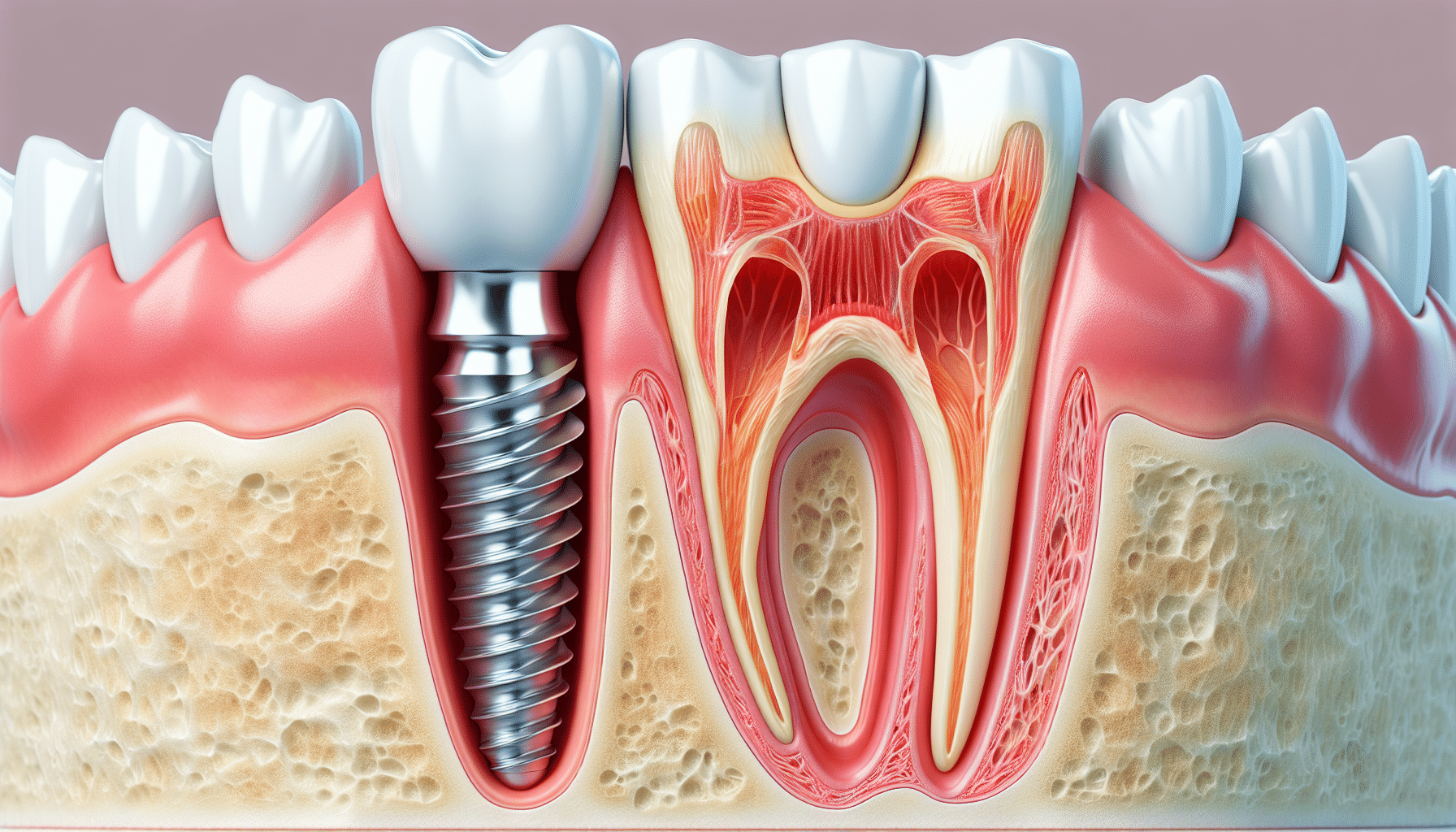Implants Dental Implants Grand Haven MI - Dental Implants - Benefits, Types, Cost
Implants Dental Implants Grand Haven MI - Dental Implants - Benefits, Types, Cost
Blog Article
Dental Implants Near Me Grandville MI - Get Dental Implants
The journey towards dental implants begins with an intensive assessment of the jawbone's condition. When there is inadequate bone density to help an implant, bone grafting turns into a crucial procedure to recreate Home Page a stable foundation. Understanding how a lot bone grafting is needed for dental implants greatly influences the remedy plan, Visit Website timeline, and overall success rate.
The amount of bone grafting required is dependent upon multiple factors, together with the extent of bone loss, the implant's size, and the precise location within the mouth. In instances of significant bone loss as a outcome of periodontal illnesses, trauma, or extended tooth loss, more in depth grafting could additionally be necessary. Conversely, if the bone loss is minimal, a smaller graft might suffice.
Dental Implants And Dentures Grand Haven MI - Dental Implants - Tooth Replacement
The evaluation process typically entails imaging studies similar to X-rays or 3D scans, permitting the dental skilled to visualise the bone structure (Dental Implant Walker MI). These images help in figuring out the quality and quantity of current bone. If the bone is deemed inadequate, the dentist will then outline the appropriate grafting procedures
Grafting can be sourced from varied areas. Autografts, which involve harvesting bone from the affected person's personal body, are sometimes deemed the gold commonplace. These supply excellent integration with the present bone but come with the downside of further surgery. Other choices include allografts, which use donor bone, and artificial materials designed to imitate natural bone. Each choice has its own implications on healing and success rates.
After figuring out the required quantity of bone grafting, the dental professional will create a tailor-made plan for the patient. This plan could embrace the timing of bone grafting in relation to the implant placement. In some cases, a graft may be performed concurrently with the implant surgery. Alternatively, in additional difficult eventualities, a separate healing interval is indicated.
Healing timelines differ primarily based on the individual's health, the extent of grafting, and the type of graft used. Generally, the therapeutic of a bone graft takes several months earlier than an implant may be positioned. During this time, bone regeneration occurs, resulting in a stable base for the implant.
Full Mouth Dental Implants Norton Shores MI - Dental Implants - Implantsology
Patients typically marvel in regards to the risks related to bone grafting. While issues corresponding to infection or graft failure are attainable, these occasions are comparatively rare. Adhering to post-operative care instructions and attending follow-up appointments minimize risks and promote therapeutic.
Once the bone has adequately healed, the dentist assesses the graft's success by evaluating the bone density and stability. If every little thing seems favorable, the subsequent steps towards putting the dental implant can start. The success of this subsequent step largely hinges on the standard of the bone graft and its integration with the encompassing bone.
Cost concerns play an necessary function within the decision-making course of. The expense of bone grafting varies primarily based on supplies used, the complexity of the case, and geographic location. It is crucial for sufferers to debate funds upfront to keep away from surprising payments later in the treatment.
Implants Dental Near Me Walker MI - Dental Implants: What You Should Know
Also, sufferers should have practical expectations regarding the timeline and outcomes. Many elements can affect how much bone grafting is required and its total effectiveness. A collaborative strategy involving the affected person and the dental group not solely ensures clarity but in addition enhances the possibilities of a successful end result.

Maintaining good oral hygiene and common dental visits following the procedure is important. These practices can prevent complications and ensure that each the graft and the implant remain steady over time. The ongoing relationship with a dental professional is essential, especially in the months following the procedures.
In conclusion, understanding how a lot bone grafting is needed for dental implants encompasses a multi-faceted strategy that considers bone quality, grafting types, healing time, and total patient health. The stability between reaching the desired aesthetic and useful outcomes whereas minimizing risks and complications is at the heart of dental implant procedures. The journey could additionally be extensive, but a well-planned method maximizes the chances for a profitable, long-lasting result in restorative dental work.
- Determining the quantity of bone grafting required for dental implants usually hinges on the initial bone density and volume of the affected person's jawbone.
- Each affected person's case is unique; elements such as previous extractions, periodontal disease, or trauma can affect the necessity for grafting.
- A 3D imaging scan is typically carried out to evaluate the exact dimensions of the obtainable bone and inform the grafting strategy.
- The type of dental implant placement—immediate or delayed—may dictate the amount of bone grafting necessary for stability and integration.
- Different forms of graft materials, similar to autografts, allografts, or artificial choices, can impression how much grafting material is needed.
- Assessing the affected person's overall health, age, and way of life habits can affect the therapeutic process, influencing graft volume requirements.
- The depth and placement of the implant can necessitate varying amounts of graft material to secure optimum outcomes.
- Successful integration of the dental implant often relies on enough bone density, leading to a tailored grafting method for each individual.
- Consultation with an oral surgeon will provide a clearer estimate of the bone grafting wanted based on complete evaluations and imaging results.
- Post-grafting therapeutic time varies; thus, a cautious analysis is crucial to determine the ultimate quantity of grafting required for profitable implantation.undefinedHow much bone grafting is needed for dental implants?
Dental Implants Near Me Grand Haven MI - Dental Implants Procedure: What to Know
What is bone grafting and why is it needed for dental implants?undefinedBone grafting is a surgical procedure that provides bone or bone-like material to the jawbone. It is necessary for dental implants when the prevailing bone is inadequate to help the implant, ensuring stability and long-term success.
How do I know if I need a bone graft for dental implants?undefinedYour dentist or oral surgeon will consider your jawbone via x-rays or 3D imaging to find out its density and quantity. If they discover that you simply lack enough bone, they will suggest a bone graft earlier than proceeding with the dental implant.
Dental Implants Whole Mouth Grand Rapids MI - Learn More About Your Implants Treatment
What elements affect the amount of bone grafting needed?undefinedFactors include the dimensions and site of the implant website, the health and density of present bone, and particular person therapeutic capability (Dental Implant And Bridges Muskegon Heights MI). These elements help the dentist determine the appropriate amount of graft material wanted
Are there different sorts of bone grafts used for dental implants?undefinedYes, there are several types, including autografts (from your own body), allografts (from a donor), xenografts (from animals), and artificial graft supplies. Each sort has unique advantages and can be chosen primarily based on individual patient wants.
Dental Implant Muskegon MI - What are dental Implants? Types, procedures, and more
How long does the bone grafting procedure take?undefinedThe length varies based on the complexity of the grafting course of and the extent of the realm treated. Generally, a bone grafting procedure can take wherever from half-hour to a few hours, relying on the particular circumstances.
What is the recovery time after a bone graft for implants?undefinedRecovery occasions can differ, however usually, preliminary therapeutic might take a number of weeks, while complete integration of the graft with the bone can take a number of months. Your dentist will provide a customized timeline based mostly on your situation.

Will I experience pain after the bone grafting procedure?undefinedSome discomfort is common after a bone graft, however it's usually manageable with prescribed pain medicine. Most sufferers report that pain diminishes considerably inside a few days.
Implants Dental Near Me Holland MI - Full Mouth Dental Implants
How does bone grafting affect the overall dental implant timeline?undefinedBone grafting may lengthen the general timeline for receiving dental implants, because it requires a healing period earlier than implants could be placed. This can add several months to the process however is crucial for a profitable implant placement.

Are there risks associated with bone grafting for dental implants?undefinedLike any surgical procedure, bone grafting carries some risks, such as infection, graft failure, or issues related to anesthesia. However, when carried out by an experienced professional, these risks are usually low.
Can I have dental implants positioned instantly after a bone graft?undefinedIn many instances, dental implants can't be placed immediately after a bone graft as a outcome of need for the graft to integrate into the prevailing bone. However, some methods, like instant loading, might enable for this underneath particular conditions. Your supplier will advise you on the finest option based mostly in your circumstances.
Report this page